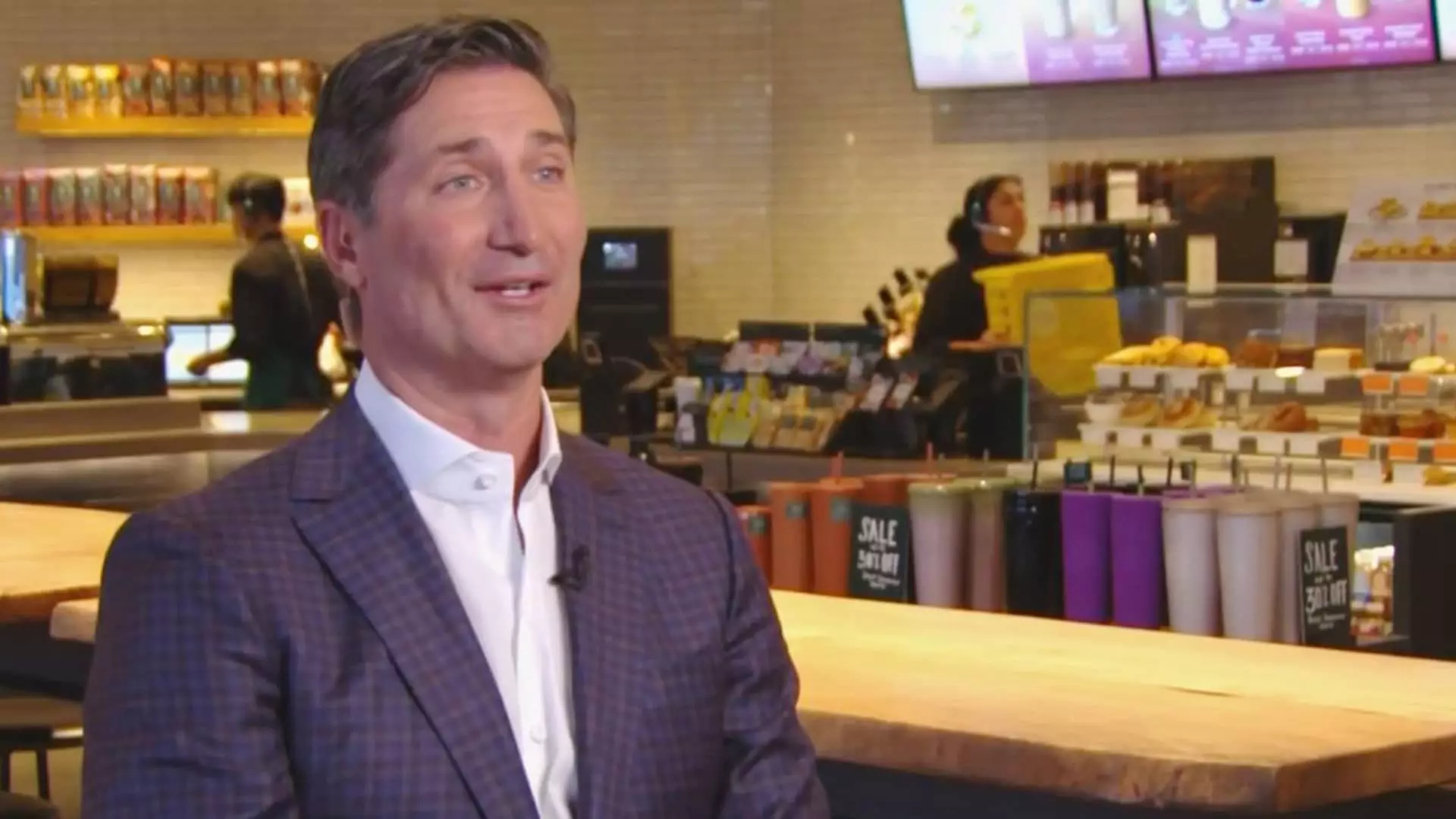In the realm of international coffee chains, few names resonate quite like Starbucks. However, recent reports indicate that the company is grappling with a significant challenge: declining sales for three consecutive quarters. In light of this, CEO Brian Niccol recently unveiled a multi-faceted strategy designed to reinvigorate the brand and better serve its customers while aiming for a robust recovery. This article delves into the key elements of Niccol’s strategy, outlining changes in mobile ordering, menu optimization, store ambiance, and marketing.
One of the most pressing issues Niccol identified is the overwhelming volume of mobile orders that inundate Starbucks locations. Currently, over thirty percent of transactions originate from mobile orders, which, while convenient, have introduced complications for both customers and staff. Niccol expressed the necessity of providing customers with a clearer understanding of when their drinks will be ready, which could reduce frustration and enhance overall satisfaction.
Additionally, he intends to refine the customization options available via the mobile app. This pivot aims to simplify the ordering process by introducing “better guardrails” that will streamline the customization choices, ensuring that baristas can consistently and accurately fulfill orders. By addressing these issues, Starbucks hopes to alleviate the chaos that can arise in busy locations and improve service speed.
As part of the turnaround plan, Starbucks has committed to re-evaluating its expansive menu. Niccol asserts that simplifying offerings to focus on “fewer, better” items will not only enhance efficiency but also improve the consistency of the drinks served. He has acknowledged that numerous menu items lead to slower service, as baristas often struggle with unfamiliar recipes.
Though this change might elicit disappointment from customers who enjoy the wide selection, Niccol is confident that patrons will value the steadier, quicker service as the company strives to adhere to a four-minute service standard. By streamlining its offerings, Starbucks aims to create a more efficient environment for both employees and customers alike.
Another crucial aspect of Niccol’s strategy is to restore Starbucks’ identity as a “third place”—a cozy environment that invites customers to gather outside of home or work. He recognizes that the brand has drifted away from this vision, especially with the rise of pickup-only stores that provide little in the way of social interaction or comfort.
To reclaim this ambiance, Niccol plans to reinstate elements such as ceramic mugs and comfortable seating within stores. He believes that a welcoming atmosphere with thoughtful design choices will encourage customers to spend more time in the cafes, fostering community connections. In a world where remote work and takeaway are commonplace, investing in a warm, inviting space could differentiate Starbucks from its competitors.
Reintroducing Convenience with Condiment Bars
Historically, Starbucks included condiment bars for customer convenience, allowing patrons to personalize their drinks as they saw fit. However, during the Covid-19 pandemic, these stations were removed, resulting in customers needing to ask baristas for essentials like sugar or milk. Niccol announced that condiment bars would soon be reinstated, alleviating pain points for customers and freeing up baristas to focus on crafting beverages.
This shift not only enhances the customer experience but also emphasizes the company’s commitment to service. Furthermore, with the confirmed increase in scheduled hours for barista staff, Starbucks is poised to make strides in employee retention and capability, addressing the operational challenges that have plagued the company.
A Fresh Marketing Approach
Recognizing the importance of a compelling marketing strategy, Niccol signaled a shift in how Starbucks engages with potential customers. He intends to broaden marketing outreach beyond loyal Starbucks Rewards members and instead highlight the quality of the coffee itself. Fewer discount-driven promotions will also be a part of this new approach, addressing concerns that such offers can overload staff and detract from service quality.
Niccol’s marketing acumen, honed over years in prominent companies like Procter & Gamble and Taco Bell, will be instrumental in shaping Starbucks’ new narrative. By bringing fresh perspectives into the fold—like appointing Tressie Lieberman as the new chief global brand officer—he aims to rejuvenate the brand and attract a wider audience.
As Starbucks navigates a tumultuous financial climate, these strategic adjustments represent a calculated effort to address current shortcomings while laying the groundwork for future success. By revamping mobile ordering, streamlining the menu, reimagining store environments, and redefining marketing strategies, Brian Niccol and his team hope to not only stem the tide of declining sales but also transform Starbucks into a thriving cultural hub once again.
While the adjustment process may not be without its growing pains, if implemented effectively, these changes could ensure that Starbucks remains a staple in the global coffee market, with a renewed sense of purpose and customer loyalty at its core.

